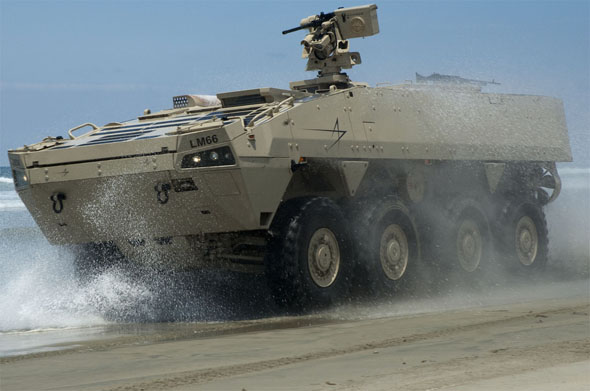

Lockheed Martin has won a USMC contract funding the evaluation of the Patria AMV 8×8 vehicle, as part of the marine Corps Marine Personal Carrier (MPC) program. The $3.5 million contract funds the test and evaluation of the vehicle, dubbed ‘Havoc’. The eight months testing will take place at the Amphibious Vehicle Test Branch at Camp Pendleton, Calif., where the corps will evaluate the vehicle’s human factors and amphibious capabilities. A parallel evaluation of the vehicle’s protection will occur at the Nevada Automotive Test Center in Carson City, Nev. The MPC program is scheduled for seven years with production of nearly 100 units.
BAE Systems has also received a similar award, to deliver an 8×8 APC (supposedly a variant of the SuperAV 8×8 APC produced by its team-mate Iveco).
Following a comprehensive study and testing of a technology demonstrator vehicle, the Marine Corps prepared an Analysis of Alternatives (AoA) summarizing the requirements for the new vehicle.
The MPC was not designed to replace an existing capability but rather complement the capabilities of existing protected transport provided by the AAV in the Assault Amphibian Battalion. Originally, the Marine Corps were looking at vehicles complementing the Expeditionary Fighting Vehicle (EFV) which was terminated later.
The full version of this article (1200 words) is open for our Premium Members




















